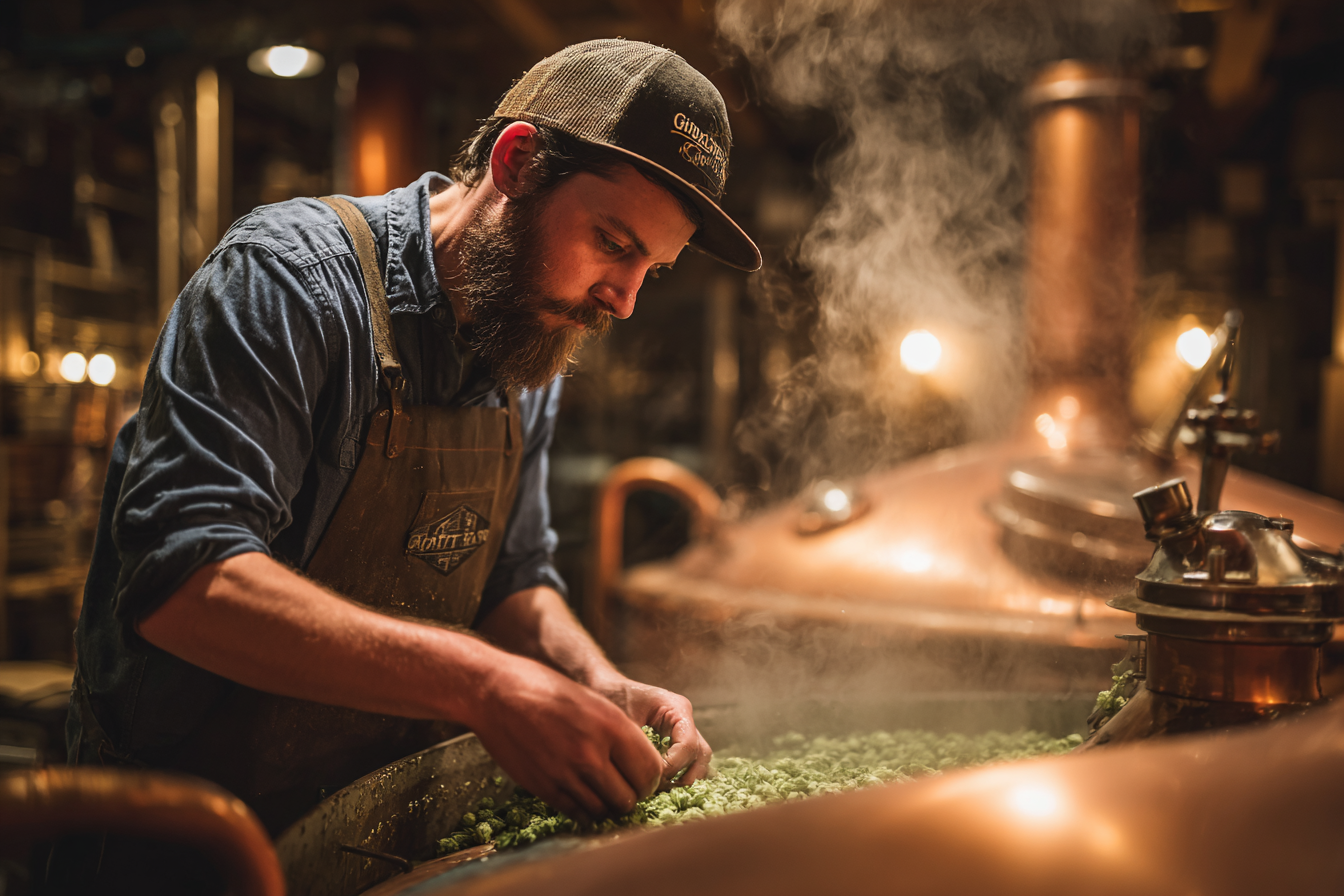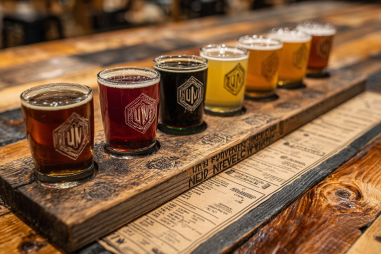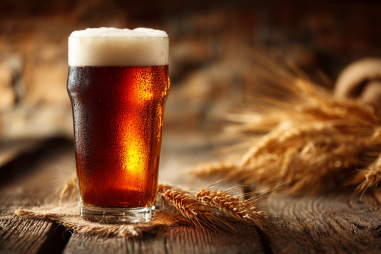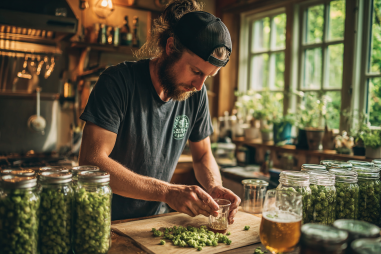Grodziskie beer is a fascinating and unique style that has captivated beer enthusiasts with its smoky aroma, light body, and refreshing character. Originating from Poland, this historic brew, sometimes referred to as Polish Champagne, boasts a distinct profile that sets it apart from other wheat beers. Whether you’re a homebrewer curious about recreating this classic or simply intrigued by its heritage, understanding the Grodziskie beer brewing process is key to appreciating what makes this style so special. In this article, we’ll explore the ingredients, brewing methods, fermentation details, and how tradition meets modern innovation to bring Grodziskie beer to life.
Overview of Grodziskie Beer Style
Grodziskie, sometimes called Grätzer in Germany, is a historical Polish wheat beer style that dates back several centuries. It is known for being light-bodied and highly carbonated, with an alcohol content usually hovering around 3.5-4% ABV. What truly defines this style is its unmistakable smokiness derived from using oak-smoked wheat malt. Unlike darker smoked beers like rauchbier, Grodziskie has a pale golden color and a crisp, effervescent profile that makes it highly drinkable. Historically, it was brewed in the town of Grodzisk Wielkopolski, which is where it gets its name.
Traditionally, Grodziskie was brewed using all wheat malt and featured a fairly high attenuation, making it dry and refreshing. The beer enjoyed popularity in Poland and spread to neighboring regions, though it eventually faded during the 20th century. Thanks to beer enthusiasts and craft brewers, Grodziskie has experienced a resurgence recently, celebrated for its unique smoky note combined with a clean, light body.
Ingredients Used: Oak-Smoked Wheat Malt and Hops
The most critical ingredient defining Grodziskie beer is the oak-smoked wheat malt. Instead of using barley malt—which is common in many beer styles—Grodziskie relies predominantly on wheat malt, sometimes even 100% malted wheat. This grain contributes to the beer’s pale color and smooth mouthfeel. However, what elevates this malt to legendary status is the traditional smoking method.
The malt is dried over fires fueled by oak wood, imparting a delicate but noticeable smoky aroma and flavor to the grains. This oak-smoking method is distinct from the beechwood smoking used in German rauchbiers and is essential to recreating an authentic Grodziskie taste.
When it comes to hops, Grodziskie uses only noble or traditional varieties, selecting those that offer a mild bitterness and subtle aroma to balance the beer’s sweetness and smoke without overpowering it. Historically, Polish hops like Lublin were common, but contemporary brewers sometimes substitute varieties like Saaz or East Kent Goldings. The hop addition is usually modest, enough to create a clean bitterness and minimal hop aroma that complements the malt profile.
Step-by-Step Brewing Timeline
The brewing process of Grodziskie beer follows certain traditional steps adapted both for homebrew and commercial scale. Here’s a general timeline of the key stages:
- Milling: The oak-smoked wheat malt is carefully crushed to prepare for mashing, ensuring the grains retain some structure for proper enzyme activity.
- Mashing: The malt is mashed at a temperature around 64-67°C (147-153°F) to promote a highly fermentable wort with a light body. The mash duration is often between 60-90 minutes, with a focus on maximizing sugar extraction and minimal dextrin production.
- Lautering and Sparging: Once mashing is complete, the sweet wort is separated from the malt solids and rinsed to extract remaining sugars.
- Boiling: The wort undergoes a short boil (usually 60 minutes), with hops added mainly for bitterness. The boiling imparts sterilization and concentrates the wort.
- Cooling and Aeration: After boiling, the wort is quickly cooled to fermentation temperature and aerated to prepare for yeast pitching.
This basic process respects the traditional principles behind Grodziskie, but the brewer can fine-tune times, temperatures, and hop schedules based on their setup and desired final character.
Fermentation Specifics and Yeast Selection
Fermentation is where much of the magic in Grodziskie brewing happens. Traditional Grodziskie beers use yeast strains that ferment cleanly, promoting the light and crisp quality while allowing the oak-smoke character to shine through.
Typically, a clean, neutral yeast strain akin to those used in German wheat beers or classic pale ales is chosen. The fermentation temperature generally ranges between 16-20°C (60-68°F), encouraging a relatively quick and complete fermentation that results in a dry finish.
Because Grodziskie is highly attenuated, the yeast activity is robust, lowering residual sugars and enhancing clarity. Some brewers might employ a two-stage fermentation—starting at cooler temperatures to emphasize clean flavors and then raising temperatures slightly for maturation—though this is optional depending on the equipment and style preferences.
Traditional vs. Contemporary Brewing Adaptations
While the essence of Grodziskie remains firmly rooted in tradition, modern brewing technology has allowed some adaptations to enhance consistency and quality. Traditionally, Grodziskie was brewed almost exclusively with oak-smoked malt sourced directly from the Grodzisk region, and brewing was often small-scale and artisanal.
Today, commercial brewers may substitute oak-smoked malts with malt smoked over other hardwoods if oak is unavailable, or even recreate smoky character through specialty malt blends. Some craft brewers also experiment with barrel aging or using different yeast strains to add complexity. Vacuum or malt roasting techniques sometimes supplement traditional smoking to control intensity.
Brewing equipment improvements such as automated temperature control, advanced filtering, and precision mashing have helped make Grodziskie more accessible to brewers worldwide. Nonetheless, many purists continue to advocate for strictly using traditional smoked malt and natural fermentation to preserve the style’s authenticity.
Flavor Profile Development During Brewing
The interplay between oak-smoked wheat malt, hops, and yeast is crucial for developing the signature Grodziskie flavor profile. From mashing through fermentation, the beer evolves in a way that balances smokiness with bright hop bitterness and clean yeast-derived esters.
During mashing, the wheat malt ensures a pale, slightly hazy appearance and a soft, bready character. The oak smoke is carried through the wort into the finished beer, providing subtle hints of woodsmoke, yet never overwhelming the palate.
Hop bitterness provides just enough counterbalance so the beer doesn’t taste overly sweet or flat. The yeast fermentation removes most residual sugars, resulting in a dry, crisp finish that heightens refreshment potential. The effervescence is usually lively, with carbonation levels reminiscent of Champagne, lending a sparkle to the experience.
Overall, the flavor profile combines:
- Mild oak smoke aroma
- Light wheat malt sweetness
- Moderate hop bitterness
- Clean, dry finish
- High carbonation
This harmonious balance gives Grodziskie its enduring charm and appeal.
Common Challenges and Tips for Brewers
Brewing Grodziskie does come with unique challenges due to its reliance on smoked wheat malt, traditional methods, and highly attenuated fermentation:
- Sourcing Smoked Malt: Authentic oak-smoked wheat malt can be difficult to find outside Poland, so brewers must locate specialized suppliers or attempt to smoke their own malt properly without burning it.
- Controlling Smoke Intensity: Too much smoke can overpower the beer, while too little can make the style lose its character. Experimenting with smoking duration and malt blending helps achieve the right balance.
- Achieving Proper Attenuation: Selecting a yeast strain with high attenuation is essential for the desired dryness. Overly sweet or under-attenuated variants stray from Grodziskie tradition.
- Maintaining Carbonation: High carbonation levels define the style, so careful attention during bottling or kegging is necessary to attain the lively fizz.
- Temperature Control: Consistent mash and fermentation temperatures help preserve the delicate flavors and avoid off-flavors associated with overly hot or cold processes.
Brewers practicing patience, precise measurement, and sampling throughout the process will find a rewarding path toward producing an authentic Grodziskie beer.
Discovering Grodziskie’s Enduring Appeal
Exploring the Grodziskie beer brewing process reveals a fascinating blend of history, craftsmanship, and flavor innovation. From the essential oak-smoked wheat malt to the balanced fermentation and carbonation, every aspect contributes to a beer style that is light, smoky, and refreshingly complex. Whether brewed by traditional methods or with modern techniques, Grodziskie remains a testament to the enduring appeal of heritage beer styles.
For brewers and beer lovers alike, making or tasting Grodziskie offers an opportunity to enjoy something truly distinctive—a beverage that bridges centuries of brewing tradition with contemporary appreciation. So the next time you sip a Grodziskie, you’re not just enjoying a beer; you’re experiencing a flavorful story crafted by smoke, wheat, and passion.







